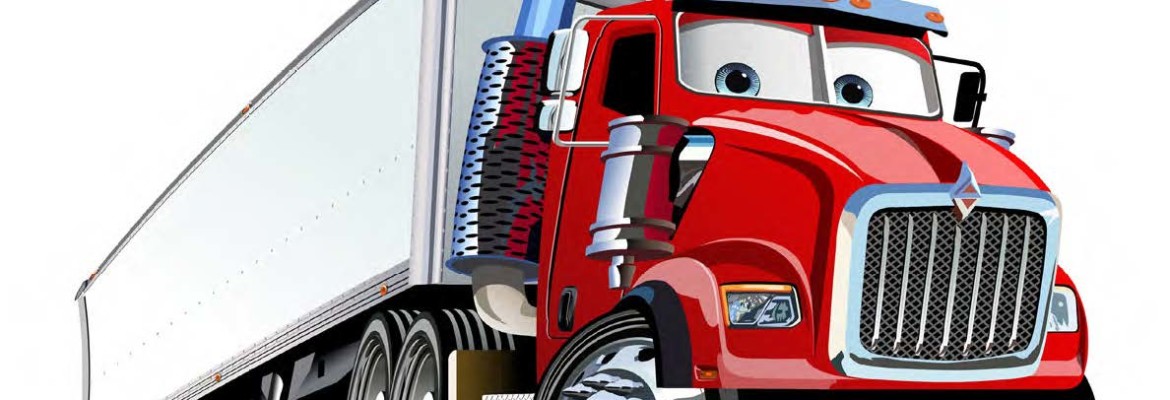COVID-19 Reopening: Safety Considerations for Trucking Companies
Dave Elniski
Introduction
With summer 2021 underway, it appears as though there is an attitude of hope in many areas with regards to the COVID-19 pandemic. While reopening is underway in some places and lockdowns remain in place in others, it is reasonable to assume that restrictions will begin to lift – even if they may be reinstated later.
Businesses need to prepare themselves for how reopening may impact their operations. While we were used to things prior to COVID-19 entering the scene, the pandemic has been around long enough now that many people have grown accustomed to operating under varying levels of public health restrictions. It is not safe to assume that all workers will be eager and willing to get right back to the ways things were pre-COVID.
In this article, I will explain some safety-related concerns businesses – especially trucking companies – should consider as they begin to see local governments lift public health restrictions. There is no one-size-fits all approach to bringing workers back to the office or removing pandemic operating restrictions, but the process requires more than simply modifying personal protective equipment (PPE) requirements.
Reviewing Hazard Assessments
Employers should assess the work they ask their workers to perform for hazards to the health and safety of their employees. This is a standard practice in occupational health and safety (OH&S), and is required in the OH&S legislation that applies to different workplaces. For the trucking industry, carriers that operate in more than one province can find their OH&S obligations in the Canada Labour Code Part II [1].
While general trucking continued operations during the pandemic due to the essential nature of the work performed, the day-to-day routine of workers was likely affected to some degree by pandemic restrictions. Office workers may have been sent to work from home. Drivers are familiar with self-declarations, self-isolation, and additional PPE.
Loosening public health restrictions imply that the risk posed by the COVID-19 virus has lessened. This is great news, but not all people will react to it the same way. Since the aforementioned workers have had significant disruptions to their pre-COVID routines, it will take time for them to adapt to new routines even if new routines were the norm back in 2019.
Businesses should reassess hazards present in their workplaces as COVID-19 restrictions ease. So much attention has been paid to public health-related hazards that it is fair to assume that other hazards have received less consideration.
Once allowed to do so, the removal of plexiglass barriers and additional hand sanitizer stations may feel cathartic and symbolic of the end of an unpleasant era in an organization’s history. However, all pre-COVID hazards are still present.
Proactive Building Maintenance
Many buildings have been operating at significantly-reduced capacity as people have been working from home. Before they reopen for increased occupancy, it is wise to assess the air circulation and water systems to make sure they are working and clean; underused systems that are suddenly expected to operate flawlessly at normal capacity may let businesses down [2].
Additionally, buildings that have not been used as much over the past year may not have been inspected as often. Inspections should be conducted prior to letting people return to work so that the air quality and comfort systems are known to function properly.
Psychological Health Hazards
Federally-regulated trucking companies are required to take action to prevent psychological injuries to their workers [3]. Regardless of legislated requirements, callousness towards people’s mental health is wrong.
Not everyone will experience the re-opening of the world equally. Some will be happy. Some will be relieved. Some will be scared. Some will experience an anxious combination of all sorts of different emotions.
I am no expert in assessing and controlling psychological hazards in the workplace, and I suggest that business and safety leaders consult credible sources for information. For example, the Canadian Centre for Occupational Health and Safety (CCOHS) offers many free resources for incorporating mental health into a health and safety program [4]. The Mental Health Commission of Canada (Home | Mental Health Commission of Canada) is another good resource to look into.
What I can say with confidence is that leaders should take an approach of compassion, patience, and courage when addressing their workers and creating policies. Compassion helps leaders consider the wellbeing of workers. Patience helps leaders and supervisors give workers the time to adapt as well as reasonable leniency for mistakes. Courage provides the strength needed for the difficult conversations that may be needed to get to the root cause of certain problems.
Cautious Optimism
I would be remiss if I left out a section on preparing for a reversal of your jurisdiction’s reopening strategy. One lesson we should all take from the current pandemic is that the ability to adapt and change quickly is important for the effectiveness of a business.
If, in 2021, we see a loosening of public health restrictions to the point where many of our hazard controls like plexiglass barriers, work from home orders, increased PPE, and hand sanitizing stations are removed, we should still keep these controls close at hand. Some of these controls may remain with us indefinitely. There is no perfectly correct response to the situation we are in now.
Increasing vaccinations and decreasing restrictions are reasons to be optimistic for the future. However, I believe that optimism of this kind needs to be tempered with a reasonable amount of caution. We remember what the instatement of mass restrictions felt like. By being cautious in our reopening strategies, we can enjoy more freedom responsibly while remaining prepared to fight infection flare-ups should they be encountered.
Summary
Businesses that have become accustomed to operating under pandemic health restrictions need to consider how reopening may affect the health and safety of their workers. While many people will welcome the loosening of restrictions, many people may be anxious about what work will look like post-COVID. Especially since COVID is still with us.
People will need to collaborate and show each other patience as we all see what the rest of 2021 has in store for us. I will end with a quote from Red Green that I think expresses my sentiments on the matter: “Remember, I’m pullin’ for ya – we’re all in this together.” [5]
References
1 – “Duties of Employers”, Canada Labour Code Part II, Government of Canada, accessed June 12, 2021, https://laws-lois.justice.gc.ca/eng/acts/L-2/FullText.html
2 – “Preparing HVAC Systems Before Reoccupying A Building”, ASHRAE Journal, accessed June 12, 2021, https://www.ashrae.org/file%20library/technical%20resources/ashrae%20journal/2021journaldocuments/january2021_022-027_mccarthy.pdf
3 – “Prevention of accidents, injuries and illnesses”, Canada Labour Code Part II, Government of Canada, accessed June 12, 2021, https://laws-lois.justice.gc.ca/eng/acts/L-2/FullText.html
4 – “Mental Health”, Canadian Centre for Occupational Health and Safety, accessed June 12, 2021, https://www.ccohs.ca/topics/wellness/mentalhealth/
5 – “Steven Smith Quotes”, GoodReads, Quotable Quotes, accessed June 12, 2021, https://www.goodreads.com/quotes/71704-remember-i-m-pullin-for-ya–we-re-all-in-this-together


